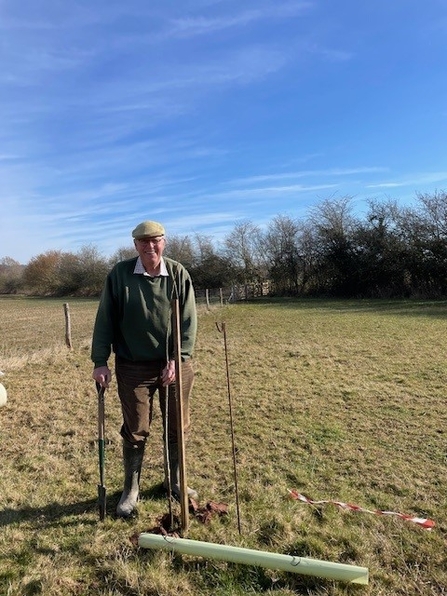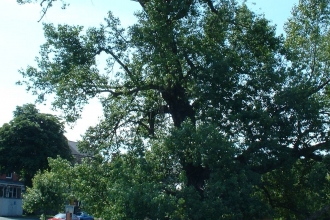This iconic tree species had seriously declined in Herefordshire. Over the last 30 years, just 150 Native Black Poplars have been identified in the county through the Black Poplar project but over the last 20 years, 30 of them have been lost as old trees have collapsed and died.
Black poplars are dioecious, meaning that they are either male or female. Worryingly, only five female trees have been identified in Herefordshire.
A recent national survey estimated there are only 7,000 black poplars in England, Wales and Ireland, of which just 600 are female [1].
The black poplar forms a massive tree, with deeply fissured bark, knobbly 'bosses' on its trunk and spreading branches that often touch the ground, before sweeping upwards again in a mass of twigs. It is usually found on floodplains, around flooded gravel pits and along ditches. Black poplars have formed an important part of our landscape and culture for centuries, from being landmarks and a focus for celebration, to inspiring the famous painter, Constable, and providing timber for floorboards.
To reproduce, the male and female black poplars need to be sited close to each other. The fertilised seeds need to fall on damp ground, making river valleys perfect places for this species. Drainage of land for agricultural has made it difficult for these wetland trees and they have slowly disappeared from the landscape. When there are no female trees available the trees cannot naturally reproduce but, luckily, they can be also grown from cuttings.
The collection at Oak Tree Farm has been planted from cuttings and truncheons (an extra-large ‘cutting’ several feet long) taken from existing Herefordshire trees and are thus ‘clones’ of these old trees. Black poplar’s grown from cuttings will not be genetically unique. This means we risk reducing the genetic variety of Black Poplars which could make them more susceptible to disease. Nine black poplar clones have been found so far found in Herefordshire identified as: Clones 23,25,28,29,32F,36,38,171,189F and these are all represented in the collection, including two of only five female trees found in the County.
There have been 27 trees planted at Oak Tree Farm, three of each clone. The idea is that one will be left to grow as usual whilst the other two will provide the truncheons for future planting. The trees have been grown in an area of the site that lies wet but doesn’t flood, it isn’t accessible by the public and will only be accessed when the truncheons are ready for cutting.
Oak Tree Farm has large areas of wet ground which is what the Black Poplars need to thrive. The planting site will create new wildlife habitat on the site and hopefully we may see some trees naturally growing nearby in the future.



